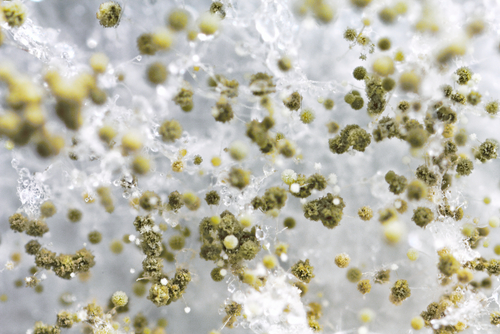 Indoor air quality is always a big concern among homeowners, but for the most part, they are primarily concerned with pollutants such as viruses, bacteria and various non-specific allergens. That being said, it’s important that you don’t overlook possible mold problems in winter and early spring. If left unchecked, your home could become a safe haven for mold, which will be good for neither your health nor that of your family.
Indoor air quality is always a big concern among homeowners, but for the most part, they are primarily concerned with pollutants such as viruses, bacteria and various non-specific allergens. That being said, it’s important that you don’t overlook possible mold problems in winter and early spring. If left unchecked, your home could become a safe haven for mold, which will be good for neither your health nor that of your family.
Defining Mold
Most people are probably at least aware of mold, but for the most part, they’re familiar with the gross bluish or dark substance that develops on bread or cheese that’s been stored for too long, or on those leftovers in your fridge that you keep meaning to throw away. The mold we’re more interested in, however, is the mold that develops within your household as a result of moisture and other conditions.
The Growth of Mold in Your Home
In order for mold to develop, moisture is the main ingredient. When areas like your kitchen, bathroom, basement and laundry room are muggy, mold can develop in a relatively short period of time.
Mold Needs More Than Moisture
Even though moisture is a key element in the development of mold, there’s more to it than that. Temperature is a factor, as well. Ideal temperatures usually hover around 60-80 degrees, which is the same temperature that we humans are comfortable with. This means that we’re unwittingly contributing to the very mold growth that we’re attempting to eliminate. However, mold problems in winter also can quickly develop in walls and exterior windows that aren’t insulated. The final element that’s required in the production of mold is the organic material that it needs in order to thrive. These “food” sources include elements ranging from wood products and indoor dust to wallpaper glue and textiles.
Dangers of Mold Problems in Winter
Although the accumulation of mold is prevalent all year round when left unchecked, it can get especially bad in winter or early spring. This is because many homes are tightly sealed against the cold outside, so any moisture that does develop or find its way inside can remain for a long time. Plus, with the difference in temperatures between inside and outside, condensation on windows and walls is more likely. When household members are exposed to mold, it can irritate the lungs, and trigger or exacerbate allergies and respiratory issues.
How to Fight Mold
While mold can be harmful to the health of your household, the good news is that a typical homeowners can combat mold with a bit of effort. The easiest element to address that’s needed for the production of mold is moisture. Start off by focusing on common areas inside your home such as the bathroom. Whenever you take a shower or bath, wipe up any excess moisture. The drier you make the area, the more difficult it will be for mold to grow. The same is true with your home’s kitchen whenever you wash dishes. Run exhaust fans whenever possible and have an HVAC technician help you pick out a dehumidifier, which will help reduce the amount of moisture in your air. Also check the area outside your home, specifically for leaks that can occur from exterior pipes. It is also important, both inside and outside your home, to repair leaks as soon as you find them.
For more expert advice on what to do when you have mold problems in winter or early spring, for any other home comfort concerns, please contact the knowledgeable professionals at Griffith Energy Services, Inc. We serve the HVAC needs of Baltimore, Frederick, Hagertown, Manassas, Westminster, and Easton, Md., plus the areas of Dover, Del., Martinsburg W.Va., and Washington D.C.
Written by Kevin Spain
Image Provided by Shutterstock.com



